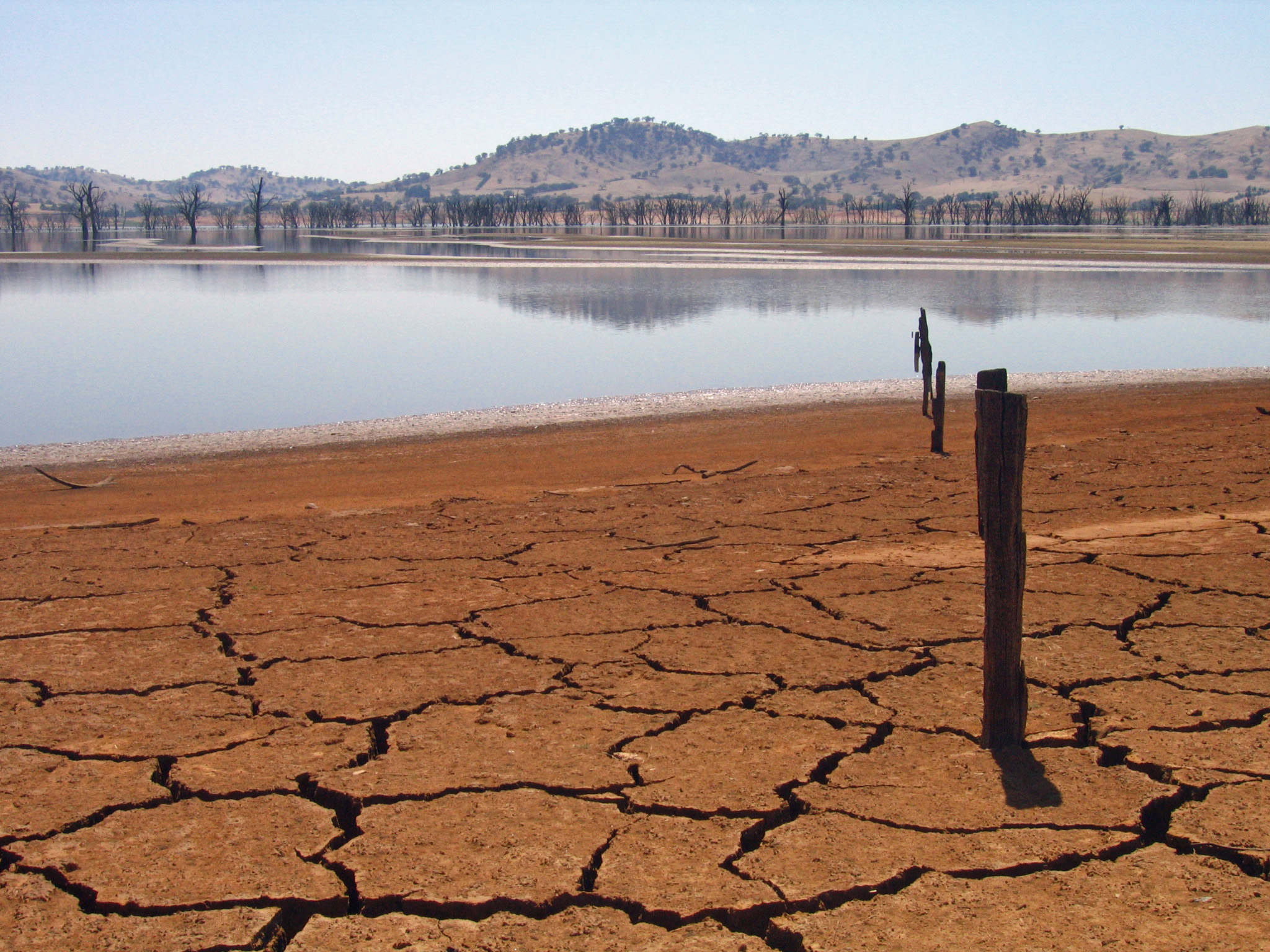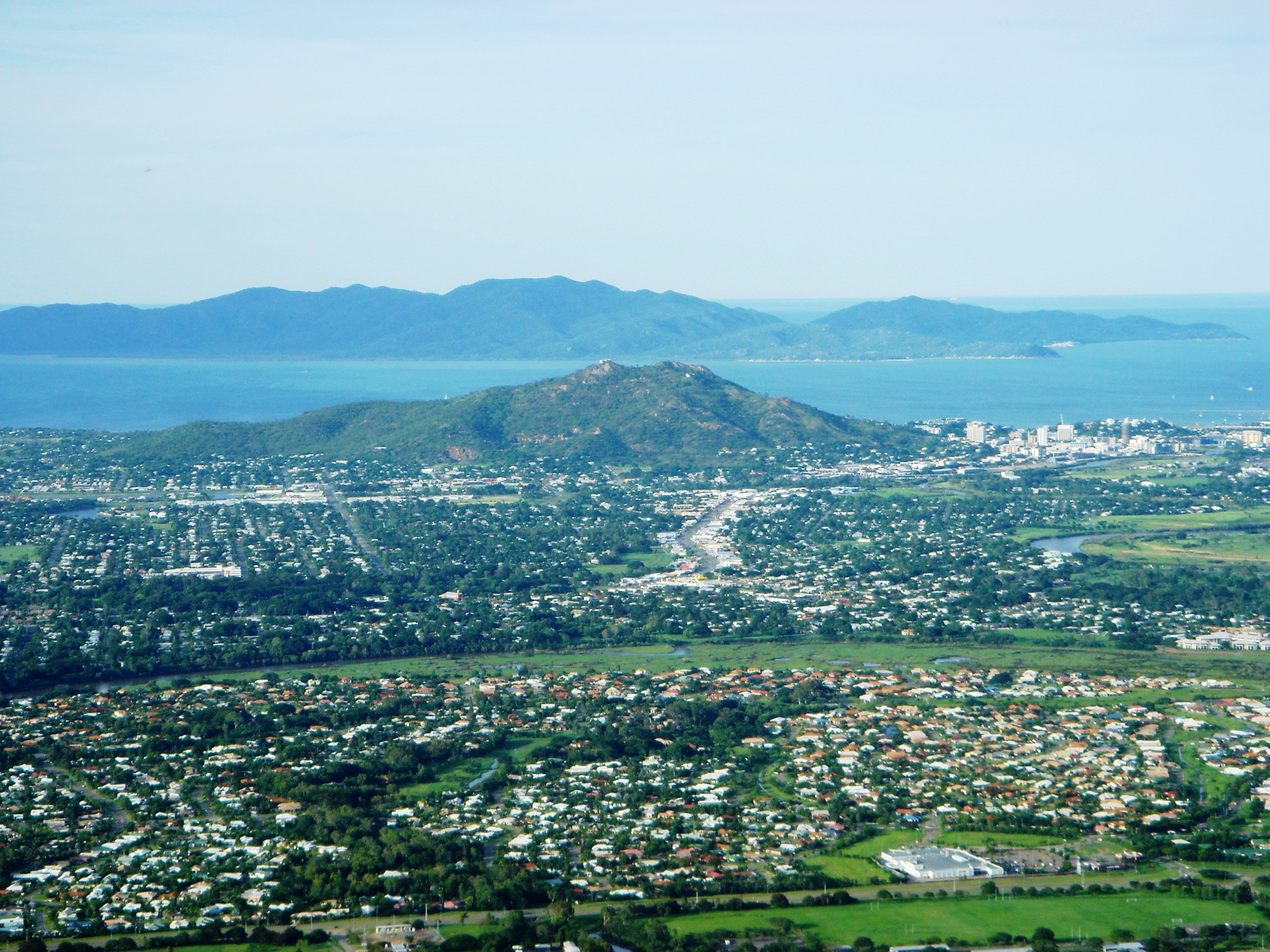|
Irrigation In Australia
Irrigation is a widespread practice required in many areas of Australia, the driest inhabited continent, to supplement low rainfall with water from other sources to assist in growing crops and pasture. Overuse or poor management of irrigation is held responsible by some for environmental problems such as soil salinity and loss of habitat for native flora and fauna. Irrigation differs from dryland farming (farming relying on rainfall) in Australia in its level of intensity and production. It is a far more economically productive land use than dryland farming. Common crops produced using irrigation include rice, cotton, canola, sugar, various fruits, and other tree crops, and pasture, hay, and grain for beef and dairy production. Surface irrigation is Australia's most common irrigation method, with drip and center pivots also utilised. All rights to use and control water are vested in the state, which issues conditional entitlements for water use. The first large-scale irrig ... [...More Info...] [...Related Items...] OR: [Wikipedia] [Google] [Baidu] [Amazon] |
Aquifer
An aquifer is an underground layer of water-bearing material, consisting of permeability (Earth sciences), permeable or fractured rock, or of unconsolidated materials (gravel, sand, or silt). Aquifers vary greatly in their characteristics. The study of water flow in aquifers and the characterization of aquifers is called ''hydrogeology''. Related concepts include aquitard, a bed (geology), bed of low permeability along an aquifer, and aquiclude (or ''aquifuge''), a solid and impermeable region underlying or overlying an aquifer, the pressure of which could lead to the formation of a confined aquifer. Aquifers can be classified as saturated versus unsaturated; aquifers versus aquitards; confined versus unconfined; isotropic versus anisotropic; porous, karst, or fractured; and transboundary aquifer. Groundwater from aquifers can be sustainably harvested by humans through the use of qanats leading to a well. This groundwater is a major source of fresh water for many regions, althoug ... [...More Info...] [...Related Items...] OR: [Wikipedia] [Google] [Baidu] [Amazon] |
Alfred Deakin
Alfred Deakin (3 August 1856 – 7 October 1919) was an Australian politician who served as the second Prime Minister of Australia, prime minister of Australia from 1903 to 1904, 1905 to 1908, and 1909 to 1910. He held office as the leader of the Protectionist Party, and in his final term as that of the Liberal Party (Australia, 1909), Liberal Party. He is notable for being one of the founding fathers of Federation of Australia, Federation and for his influence in early Politics of Australia, Australian politics. Deakin was born in Melbourne to middle-class parents. He was elected to the Victorian Legislative Assembly in 1879, aged 23, additionally working as a barrister and journalist. He held ministerial office sporadically beginning in 1883, serving twice as Attorney-General of Victoria and aligning himself with Colonial liberalism, liberal and Radicalism (historical), radical reformers. In the 1890s, Deakin became one of the leading figures in the movement for the federation ... [...More Info...] [...Related Items...] OR: [Wikipedia] [Google] [Baidu] [Amazon] |
Drought In Australia
Drought in Australia is defined by the Australian Bureau of Meteorology as rainfall over period greater than three-months being in the lowest decile of what has been recorded for that region in the past. This definition takes into account that drought is a relative term and rainfall deficiencies need to be compared to typical rainfall patterns including seasonal variations. Specifically, drought in Australia is defined in relation to a rainfall deficiency of pastoral leases and is determined by decile analysis applied to a certain area. Note that this definition uses rainfall only because long-term records are widely available across most of Australia. However, it does not take into account other variables that might be important for establishing surface water balance, such as evaporation and condensation. Historical climatic records are now sufficiently reliable to profile climate variability taking into account expectations for regions. Bureau of Meteorology records since the ... [...More Info...] [...Related Items...] OR: [Wikipedia] [Google] [Baidu] [Amazon] |
Goulburn Weir
Goulburn Weir is a weir built between 1887 and early 1891 across the Goulburn River near Nagambie, Victoria, Australia. It was the first major diversion structure built for Irrigation in Australia, irrigation development in Australia. The weir also forms Lake Nagambie where rowing regattas and waterskiing tournaments are held. The Goulburn Weir allows water to be diverted by gravity via the Stuart Murray Canal and Cattanach Canal for off-river storage in the Waranga basin, for later use in irrigation. The weir is 209 metres long by about 16 metres high. Its design was considered very advanced for its time, so much so that it featured on the back of half-sovereign and ten-shilling notes from 1913 to 1933, including on the first Australian banknote ever issued. The structure also contained one of the first hydro-electric turbines in the southern hemisphere, used to supply power for lifting and lighting. After more than 90 years of continuous service, many of the weir's components ... [...More Info...] [...Related Items...] OR: [Wikipedia] [Google] [Baidu] [Amazon] |
SLNSW 920634 Series 09 Irrigation Ca 19211924
The State Library of New South Wales, part of which is known as the Mitchell Library, is a large heritage-listed special collections, reference and research library open to the public and is one of the oldest libraries in Australia. Established in 1869 its collections date back to the Australian Subscription Library established in the colony of New South Wales (now a state of Australia) in 1826. The library is located on the corner of Macquarie Street and Shakespeare Place, in the Sydney central business district adjacent to the Domain and the Royal Botanic Gardens, in the City of Sydney. The library is a member of the National and State Libraries Australia (NSLA) consortium. The Mitchell Wing of the State Library of New South Wales building was designed by Walter Liberty Vernon, assisted by H. C. L. Anderson and was built from 1905 to 1910, with further additions by Howie Bros in 1939; by FWC Powell & Sons in 1959; and by Mellocco Bros in 1964. The property was added to t ... [...More Info...] [...Related Items...] OR: [Wikipedia] [Google] [Baidu] [Amazon] |
Great Artesian Basin
The Great Artesian Basin (GAB) of Australia is the largest and deepest artesian basin in the world, extending over . Measured water temperatures range from . The basin provides the only source of fresh water through much of inland Australia. The basin underlies 22% of the Australian continent, including most of Queensland, the south-east corner of the Northern Territory, north-eastern South Australia, and northern New South Wales. It is deep in places and is estimated to contain of groundwater. The Great Artesian Basin Coordinating Committee (GABCC) GABCC website coordinates activity between federal, state/territory and local levels of government and community organisations. Physiography This area is one of the distinct physiographic provinces of the larger[...More Info...] [...Related Items...] OR: [Wikipedia] [Google] [Baidu] [Amazon] |
Ground Water
Groundwater is the water present beneath Earth's surface in rock and soil pore spaces and in the fractures of rock formations. About 30 percent of all readily available fresh water in the world is groundwater. A unit of rock or an unconsolidated deposit is called an ''aquifer'' when it can yield a usable quantity of water. The depth at which soil pore spaces or fractures and voids in rock become completely saturated with water is called the ''water table''. Groundwater is recharged from the surface; it may discharge from the surface naturally at springs and seeps, and can form oases or wetlands. Groundwater is also often withdrawn for agricultural, municipal, and industrial use by constructing and operating extraction wells. The study of the distribution and movement of groundwater is ''hydrogeology'', also called groundwater hydrology. Typically, groundwater is thought of as water flowing through shallow aquifers, but, in the technical sense, it can also contain soil mois ... [...More Info...] [...Related Items...] OR: [Wikipedia] [Google] [Baidu] [Amazon] |
Double-cropping
In agriculture, multiple cropping or multicropping is the practice of growing two or more crops in the same piece of land during one year, instead of just one crop. When multiple crops are grown simultaneously, this is also known as intercropping. This cropping system helps farmers to double their crop productivity and their income. But, the selection of two or more crops for practicing multicropping mainly depends on the mutual benefit of the selected crops. Threshing can be difficult in multiple cropping systems where crops are harvested together. It can take the form of double-cropping, in which a second crop is planted after the first has been harvested. In the Garhwal Himalaya of India, a practice called barahnaja involves sowing 12 or more crops on the same plot, including various types of beans, grains, and millets, and harvesting them at different times. Benefits of multiple cropping Adopting the practice of multiple cropping on a large scale can help in reducing the ... [...More Info...] [...Related Items...] OR: [Wikipedia] [Google] [Baidu] [Amazon] |
North Queensland
North Queensland or the Northern Region is the northern part of the Australian state of Queensland that lies just south of Far North Queensland. Queensland is a massive state, larger than many countries, and its Tropical North Queensland, tropical northern part has been historically remote and undeveloped, resulting in a distinctive regional character and identity. The region is prone to floods and cyclones. Townsville is the largest urban centre in North Queensland, leading it to be regarded as an unofficial capital. The region has a population of 231,628 and covers . Geography There is no official boundary that separates North Queensland from the rest of the state. Unofficially it is usually considered to have a southern border beginning south of the Mackay Region southern boundary, but historically it has been as far south as Rockhampton. To the north is the Far North Queensland region, centred on Cairns and out west is the Gulf Country. A coastal region centred on its ... [...More Info...] [...Related Items...] OR: [Wikipedia] [Google] [Baidu] [Amazon] |
Burdekin River
The Burdekin River is a river in North and Far North Queensland, Australia. The river rises on the northern slopes of Boulder Mountain at Valley of Lagoons, part of the western slope of the Seaview Range, and flows into the Coral Sea at Upstart Bay over to the southeast of the source, with a catchment area of approximately . The Burdekin River is Australia's largest river by (peak) discharge volume. The river was first encountered by Europeans during the expedition led by Ludwig Leichhardt in 1845 and named in honour of Thomas Burdekin, one of the sponsors of the expedition. Course and features The Burdekin River rises on the western slopes of the Seaview Range, part of the Great Dividing Range, west of . In the river's upper catchment, from its source the river generally flows west and then south out of the Girringun National Park, part of the UNESCO Wet Tropics World Heritage Area. This area, now part of Basalt was the location of one of the earliest inland settlements ... [...More Info...] [...Related Items...] OR: [Wikipedia] [Google] [Baidu] [Amazon] |





